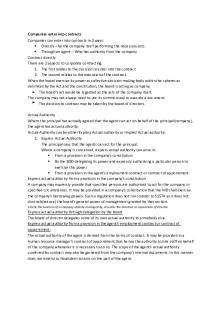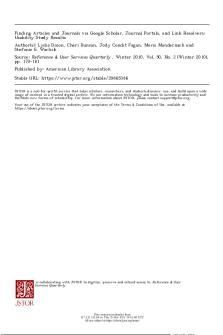123 PDF

| Title | 123 |
|---|---|
| Author | Tomiyasu Cedric |
| Course | Scripting Language |
| Institution | Tribhuvan Vishwavidalaya |
| Pages | 8 |
| File Size | 170.1 KB |
| File Type | |
| Total Downloads | 260 |
| Total Views | 1,005 |
Summary
QUESTION 1Explain the following types of person-centered approaches. PATH – Planning Alternative Tomorrows with Hope A visual planning tool that starts by looking at future goals and visions. After defining an individual’s vision, there is an 8-step process to follow in determining an action plan or...
Description
QUESTION 1 Explain the following types of person-centered approaches. PATH – Planning Alternative Tomorrows with Hope A visual planning tool that starts by looking at future goals and visions. After defining an individual’s vision, there is an 8-step process to follow in determining an action plan or ‘pathway’ to achieving those goals. The PATH planning method was developed by Jack Pear point, Marsha Forrest and John O’Brien. MAPs – Making Action Plans A planning process using a person-centered approach to be achieving individual goals. Strategies are built on individual interest and needs. The planning follows a 5-step process. PFP – Personal Futures Planning Personal Futures Planning is a process to assist teams to plan for the next stage of an individual's life. The team includes a person's family, relatives and/or carers. The planning focuses on the future needs of the individual with an emphasis on individual strengths and interests Circles of Support A person-centered planning tool useful for identifying who is involved in an individual’s support plan, strengthening specific relationships and establishing relationships and balance between family, friends, carers or other workers in the individual’s life. QUESTION 2 Explain the difference between person-centred and system-centred approach. Person centred – focuses on approaches based around the client’s preferences, needs and goals. Individual needs determine the resources and services provided. System centred – where the resources and services are pre-determined without consideration of individual needs, strengths or goals.
QUESTION 3 Describe what the term ‘self-directed support services’ means to people with a disability or to those who are aged. It includes: exercising individual control being at the centre of decision-making throughout their lives the ability to make choices based on individual needs and preferences receiving support services provided on the basis of individual needs . Better control provided by the individual, their family and carers over the planning, design and implementation of the services and support they require. QUESTION 4 Explain what is meant by ‘self-determination’.
Self-determination refers to supporting and encouraging an individual to be aware of their own rights, strengths and abilities that empower individuals to make decisions which cater towards their own needs and goals. QUESTION 5 When would you need to complete a client risk assessment? Provide three examples. Answers: Change in weight Poor skin Infections Symptoms of self-neglect Behaviors of concern Impaired judgment or problem-solving abilities Impaired cognitive functioning Environmental hazards. QUESTION 6 What documentation are your required to complete as part of providing client support? Provide at least three examples. Example 1 Example 2 Example 3
Background of the client Case documentation Medical report
QUESTION 7. Match the scenario with the correct ethical issue in the table below. Ethical issue privacy discrimination Work roles Duty of care Mandatory reporting
Which scenario covers this? B A E C D
QUESTION 8. What are the key objectives of the UNCRPD? The Convention is intended as a human rights instrument with an explicit, social development dimension. It adopts a broad categorization of persons with disabilities and reaffirms that all persons with all types of disabilities must enjoy all human rights and fundamental freedoms. It clarifies and qualifies how all categories of rights apply to persons with disabilities and
identifies areas where adaptations must be made for persons with disabilities to effectively exercise their rights and areas where their rights have been violated, and where protection of rights must be reinforced. QUESTION 9. PROVIDE 3 Examples of circumstances that require you to make an adjustment or variation of a client’s individual plan. Example 1:
Asking them how they want to spend their time
Example 2:
Informally reviewing an existing formal plan
Example 3:
Ask a client how is everything
QUESTION 10. Provide 5 examples of client rights. Example 1:
Privacy of the client
Example 2:
Confidentiality
Example 3:
Freedom of association
Example 4:
Right to express ideas and opinions
Example 5:
Right not to be abused
QUESTION 11. Provide 2 examples of when members of the support group might be required to provide feedback on individual plans. Example 1:
Case documentation.
Example 2:
Information from the other professional sources including medical report.
QUESTION 12. Describe a situation where you or a client has experienced a risk to health or safety. Explain how this was managed. There are different hazards that client has experienced a risk such as slippery floors, unguarded machinery, exposed electrical wires which is not safe so to manage this type of hazards by doing immediate dry mop so that no can slip down, the unguarded
machinery should be replace, and the exposed wire should be managed properly QUESTION 13. What risks are identified in the workplace, who are they reported to? Example 1:
Supervisor
Example 2:
Can be discuss in the case meeting
Example 3:
Manager
QUESTION 14. Provide 3 examples for each of the following skill development. Life skills Example 1:
Patience
Example 2:
Discretion
Example 3:
A high level of professionalism
Social skills Example 1:
Good communication
Example 2:
Supportive attitude
Example 3:
A caring
Vocational skills Example 1:
Physically fit
Example 2:
To be committed with the right of elderly people
Example 3:
Ability to deal with all types of the client
Question 15 Think about one of your clients or a case study you have heard or read about (for example, perhaps one from your learning materials). What are some factors that would affect the support received by this client?
Gracie, 82 years of age, lives at Coco Beach Respite Service. At a recent client meeting, she complains to you that a number of her laundry items are coming back unironed. When you clarify Gracie concerns, you discover that she would like her underwear, singlets, nighties and socks to be ironed. To resolve the issue, you offer to raise the matter for discussion at the next monthly service meeting to find out if other residents have concerns about their laundry or ironing services. You reassure Dorothy that her confidentiality will be protected and Dorothy agrees to her concern being discussed at the meeting. At the meeting, the residents appear to feel comfortable sharing their views and ironing preferences in the open forum. Some of the staff also open up about the stress they feel having to make individual judgement calls on what items of laundry to iron, and having to remember how certain residents like their items to be ironed.
CASE STUDY: Tully Assessment Task 2: Discussion Report Name
Savita
Date:
Group participants
1
2
Strategies •
Engaged her in different activities
•
Make many volunteers visits her so that she doesn’t feel lonely
•
Talk about her family so that she feels good and not to smoke lot because of her father death due to smoking
•
Make peaceful environment around her so that she doesn’t feel stress
Strength-based activities
•
Make her reading books
•
Take her in peaceful environment to refresh
•
Give her different types of music to listen
3
Support workers’ roles and responsibilities •
Help on her personal work
•
Give her medication time to time
•
Take care of her personal hygiene
•
Engaged her in different activities
•
Handle her very calmly
•
Try to cut off her smoking habit
•
Try to share her feelings
4
Responsibilities of the support team •
Take care of her personal hygiene
•
Help her to do her work
•
Try to keep silence around her so that she does not get irritated
5
6
Additional support services •
Taking outing
•
Encourage her to sing Monitoring and review strategy
If she is kept busy in which she enjoys it will surely help her to cut off her smoking habit....
Similar Free PDFs

123
- 8 Pages

Lenovo - 123
- 43 Pages

Cantera - 123
- 27 Pages

Authority - 123
- 3 Pages

Liesmich - 123
- 46 Pages

Independencia - 123
- 6 Pages

123 - Programa
- 6 Pages

20865386 - 123
- 13 Pages

Memorial - 123
- 37 Pages

NSTP - 123
- 5 Pages

(Amortizationtable- Finman) 123
- 2 Pages

Module 6 Discussion - 123
- 1 Pages

depth study 123
- 31 Pages

Trucos de GTA 123
- 4 Pages

Economia - Apuntes 123
- 5 Pages
Popular Institutions
- Tinajero National High School - Annex
- Politeknik Caltex Riau
- Yokohama City University
- SGT University
- University of Al-Qadisiyah
- Divine Word College of Vigan
- Techniek College Rotterdam
- Universidade de Santiago
- Universiti Teknologi MARA Cawangan Johor Kampus Pasir Gudang
- Poltekkes Kemenkes Yogyakarta
- Baguio City National High School
- Colegio san marcos
- preparatoria uno
- Centro de Bachillerato Tecnológico Industrial y de Servicios No. 107
- Dalian Maritime University
- Quang Trung Secondary School
- Colegio Tecnológico en Informática
- Corporación Regional de Educación Superior
- Grupo CEDVA
- Dar Al Uloom University
- Centro de Estudios Preuniversitarios de la Universidad Nacional de Ingeniería
- 上智大学
- Aakash International School, Nuna Majara
- San Felipe Neri Catholic School
- Kang Chiao International School - New Taipei City
- Misamis Occidental National High School
- Institución Educativa Escuela Normal Juan Ladrilleros
- Kolehiyo ng Pantukan
- Batanes State College
- Instituto Continental
- Sekolah Menengah Kejuruan Kesehatan Kaltara (Tarakan)
- Colegio de La Inmaculada Concepcion - Cebu
